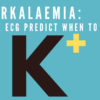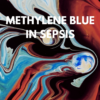Here I am, in front of a 43 year old female patient who tells me that she had a sudden headache 4 hours ago. It’s like someone hit her on the back of the head. She is not distraught, nor upset, but texting hurriedly on her smartphone. The headache occurred whilst she was at her desk and moved from the front of the head to the vertex. It is now totally resolved. Her past medical history is of migraines(which this feels nothing like) and she has no allergies and is on no medication.
What do I do? Well I have to do the non-contrast CT brain, but then what? Do I lumbar puncture?, Do I clear it on the CT? Do I CTA the patient? I’ll be talking a lot more about sudden headache and subarachnoid haemorrhage(SAH) at EMCORE.
Here’s a synopsis.
SAH is such a feared condition because of its potentially catastrophic outcome. In those patients with a re-bleed, mortality approaches 50%. Of survivors, only 50% will return to a normal level of functioning.
If a patient presents with a sudden headache, especially if severe, is often called a ‘warning leak’ or ‘thunderclap’ headache, and are neurologically intact with a GCS of 15, this is termed a Grade I SAH. A percentage of these patients will rebleed within the next few days, some have an ultra-early re-bleed which occurs within hours.
HOW GOOD IS A NON-CONTRAST CT SCAN?
We know that the sensitivity of the CT head decreases with time. Perry et al (1) conducted a prospective cohort study, which included 3132 patients. 7.7% of the group had SAH. The overall sensitivity of CT was 92.9%. In those patients where the scanning was performed within 6 hours(3rd generation CT scanner), the CT had a sensitivity and specificity of 100%. The requirement was that the CT be read by a neuro-radiologist.
A recent retrospective study by Blok et al(2) showed that sensitivity for SAH on CT was 99.9%, even when read by a staff radiologist at a non-academic hospital.
The reality here is that this will soon be standard of care. The risk of missing a SAH is <1%. The move will be more towards risk stratification and a shared decision model, where there is discussion with the patient about further testing. I like the idea of a shared decision model, but am unsure about it really working. Patients come to us for our expertise and seek our opinion. It will be difficult to have a shared decision model, where our own biases don’t affect what the patient decides.
HOW GOOD IS CSF FOR RULE OUT?
Lumbar puncture is recommended in those patients who present more than 6 hours after headache onset and where the patient wants to minimise the risk, independent of time of presentation.
There are two approaches to the lumbar puncture: one uses the red cell count and one uses xanthochromia. The red cell count approach is important in those settings where formal xanthochromia testing by spectrophotometry, is not readily available. The issues with red blood cell interpretation are that, we are not good at recognising which of our taps are traumatic. The problem with spectrophotometry is that there is a risk of false positives. There is also the issue of delay in performing the lumbar puncture as 100% of xanthochromia occurs after 12 hours. Finally there is the shortage of spectrophotometers and there distribution, which tends to be in the larger academic venues.
Gorchynski et al(3) in a retrospective study found that a red cell count of <500×106 in the 4th tube had a 100% negative predictive value for SAH. More recently Perry et al (4) found that the combination of no xanthochromia and red blood cells <2000 x 106/L excluded SAH with a sensitivity of 100% and a specificity of 91.2%
What do I do?
CT Brain- if normal, I perform a lumbar puncture. If there are < 2000 RBC and no xanthochromia, I’m done. If any part of the lumbar puncture is positive, I discuss with neurosurgery, even if its a high opening pressure, as we may need to progress to CTA/MRA.
References
1 Perry J et al Sensitivity of computed tomography performed within 6 hours of onset of headache for diagnosis of subarachnoid haemorrhage:prospective cohort study. BMJ 2011:343:d4277.
2 Blok K et al. CT within 6 hours of headache onset to rule out subarachnoid haemorrhage in non academic hospitals. Neurology 10.1212/WNL.0000000000001562
3 Gorchynski J. Interpretation of traumatic lumbar punctures in the setting of possible subarachnoid haemorrhage: who can be safely discharged? Cal J Emerg Med 2007;8:3-7
4 Perry J et al Differentiation between traumatic tap and aneurysmal subarachnoid haemorrhage:prospective cohort study. BMJ 2015;350:h568










